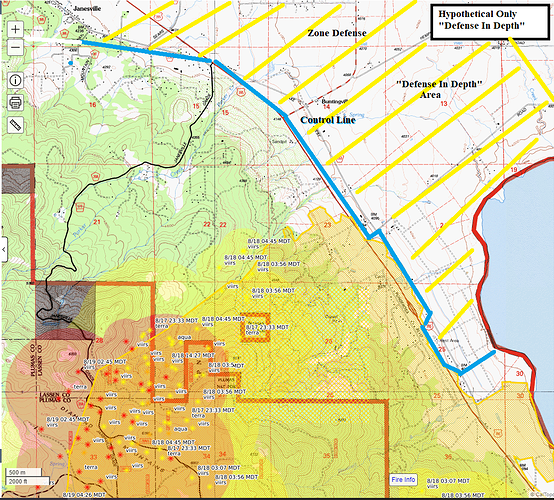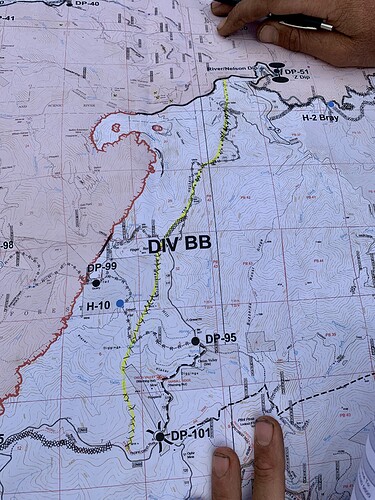This is a tactics and possibly a strategy question.
We know that an advancing fire front casts embers 1-2 miles ahead of the main fire line.
If there is good line for a surface fire stop, and an adequate road net beyond the line, would it be practical to scatter additional fire units within mutual support range of each other to put out embers for that entire potential embercast area beyond the line? I know I am talking about thousands of acres and dozens if not hundreds of additional resources.
See the attached graphic, which is for example only:
Another term might be “Saturation Patrol” because the goal would be to aggressively patrol the entire embercast area and extinguish small starts with shovel and backpack pump before they get a chance to grow. In some cases this would be a literal boot stomp - in others, calling in something with hose and using some gallons of water.
Also in the same area, fire units would be evaluating and prepping / defending structures per current doctrine.
Obviously this tactic would not work in unroaded areas (units can’t move around fast enough) and is dependent on vehicles (both for movement and as means of escape to safety zone), but the vehicles would not necessarily have to be Type I or III engines. They could be utilities with extra equipment, patrols or Type VIs - the ability to get in and out quick, carry gear and flow a little water.
This feels to me like the opposite of burning out, which denies embercast a receptive fuel bed between the line and the main fire front. Instead, the potential receptive fuel bed is being actively defended, beyond the line but in sight of it.
What am I not seeing? Too many embers being cast into the area to be protected? There are never enough resources for such a tactic to work? Terrain never favors this? (Although I picked an example from a current event, where it seems that terrain would.)
Or is this a current tactic and I just haven’t found the right manual to read it out of?
Thanks for any feedback.

